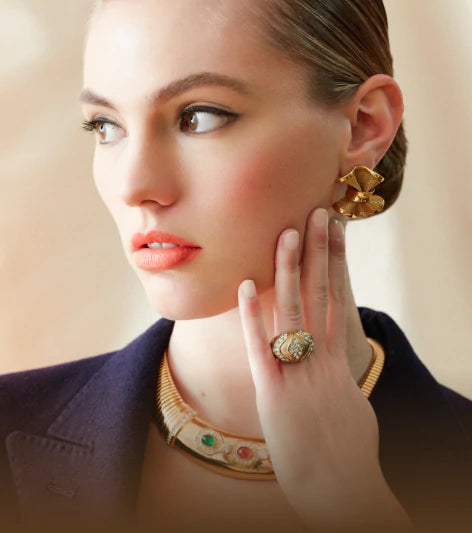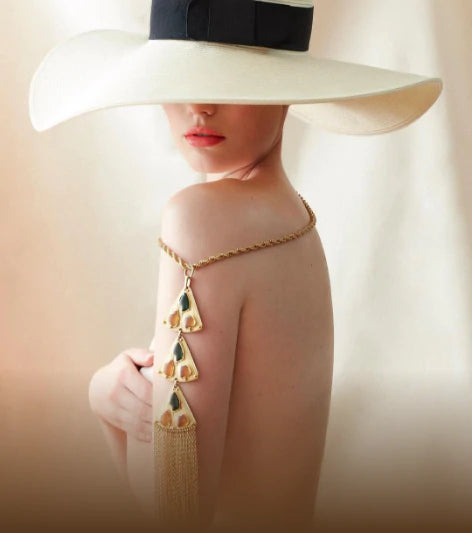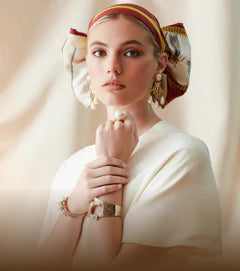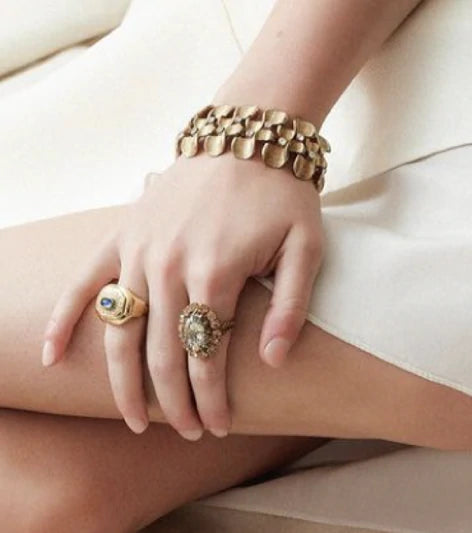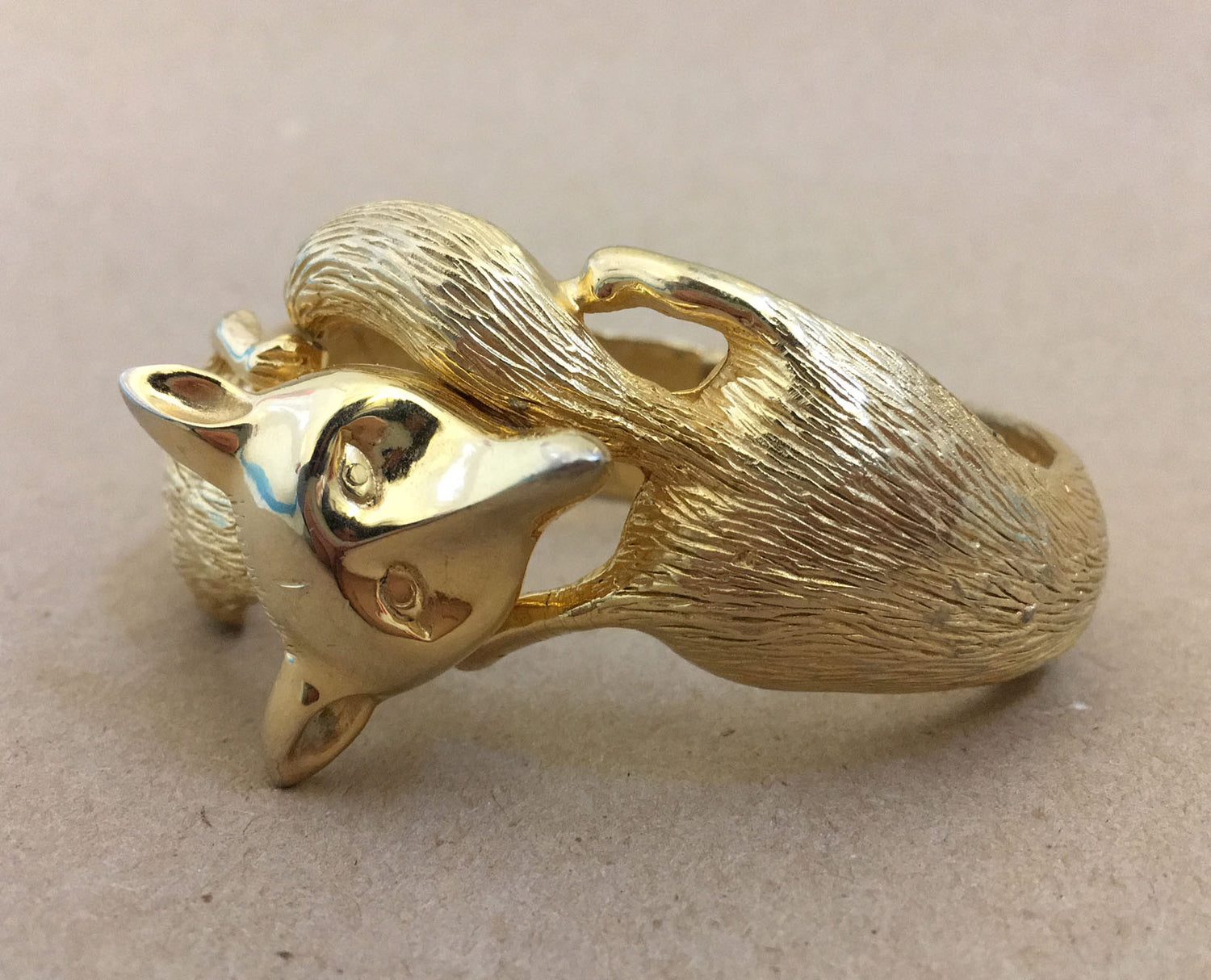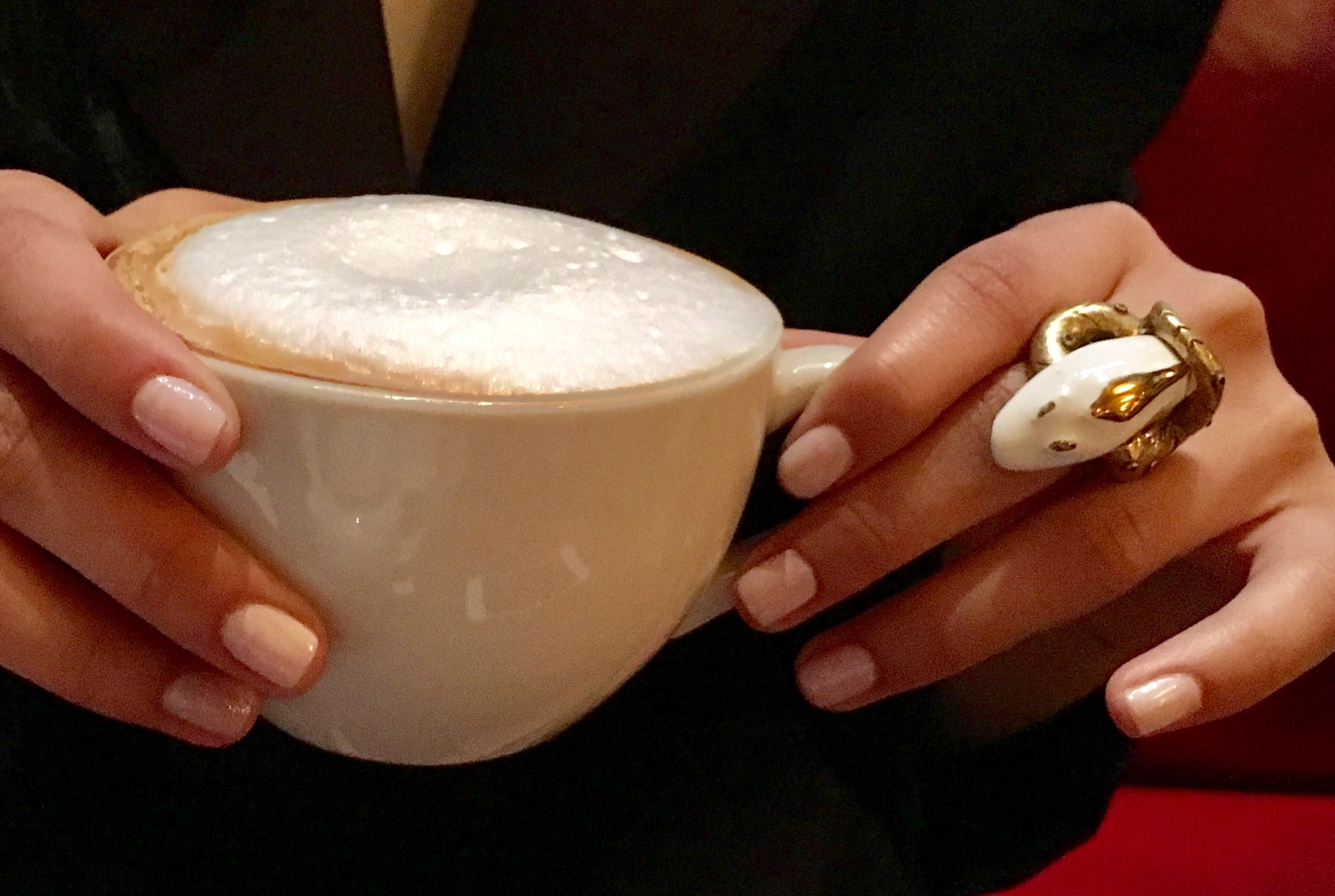As vintage costume jewelry becomes more and more mainstream, so do the opportunities for counterfeiters to fake the old “costume” thing and take advantage of its growing popularity.
 Spot the fake: The gold bracelet is new, the grey fox bracelet is from the mid 1950s and is signed Hobé
Spot the fake: The gold bracelet is new, the grey fox bracelet is from the mid 1950s and is signed Hobé
Mainly coming out of India and China, these fake vintage costume pieces copy designs and even forge signature marks of jewelry designers from the past. I’ve seen fake 1950s pieces falsely signed Hobé, Carnegie, and Schiaparelli and have seen more items claimed to be Juliana than I can count. Don’t even get me started on Chanel. All these designers are popular with collectors and therefore, a chance for fakers to make a lot of money. I’ve even seen a major department store in New York City have a couple of fake vintage pieces in their cases—to give them the benefit of the doubt, I think their buyer didn’t know the difference, as opposed to them willingly deceiving their customers.
So how do you protect yourself from a vintage fake? The easiest way is to buy from a dealer you trust. They live and breathe vintage and have seen so much, their eye can detect the true from the false. If you are buying online, look at the vendor’s rating and make sure they have enough positive feedback, and read any negative comments too. Always look at the back of the piece as well as the front, and closely examine the images or actual piece for signs that it is real or fake.
Things to watch for: An overly yellow/canary-colored gold (typical of fakes manufactured in India), too perfect a condition (if it has been worn, some light wear should be expected), a signature stamp that is raised vs. pressed into the metal, a separate signature shield that looks like it has been added on later (a lot of Hattie Carnegie fakes have the cartouche with the name just stuck on a newer piece), and the size of the item—chunkier proportions and more raised stones are signs of fakes. The original jewelry was well proportioned and lay smoothly on the skin.
These are just a couple of pointers. To start learning more, I suggest going to vintage shows and shops in your area, getting books specifically on vintage costume jewelry and the well known designers, and even renting old movies to really look at the costume designs of the day.
